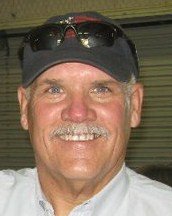 Greetings and salutations my fellow safety enthusiasts. Another day and another dollar, if the oil price goes back up, lol. We’ve been through downturns before, and in all likelihood we will go through it again. I think this is the 7th downturn that I’ve experienced in my short 49 years in the Patch—give or take a few busts where I worked other jobs until it came back. The downturns never get easier, but I digress.
Greetings and salutations my fellow safety enthusiasts. Another day and another dollar, if the oil price goes back up, lol. We’ve been through downturns before, and in all likelihood we will go through it again. I think this is the 7th downturn that I’ve experienced in my short 49 years in the Patch—give or take a few busts where I worked other jobs until it came back. The downturns never get easier, but I digress.
By the time this article hits the press, it is my hope that business picks back up, hopefully after the serious coronavirus pandemic settles down. It’s difficult to battle something you cannot see, nor adequately prepare for in advance. There are certain actions you can take to mitigate the hazard, but there are no guarantees, as of yet.
The same can be said of H2S; there are no guarantees. Even though our technology has increased tenfold since the early days of a parakeet in the top doghouse, there are ways the silent killer still takes its victims every year in the oilfield and other industries as well. We’ve tried education, training, and advanced warning systems, yet we still have deaths occurring every year. Certainly it is less frequent than the older days in the oilfield but it still has its ways of taking lives.
When I had my first formal training in H2S, back in 1979, the information was very dry. I really didn’t think there was any relevance, mainly because I really never encountered H2S. The training material and information hasn’t changed that much but the presentations these days have improved immensely. I never truly understood the PEL, STEL, or IDLH until much later. All I got was a bunch of numbers that meant nothing to me. I forgot the numbers as soon as I took the exam and left the class. Back in the day the only monitor we had for a long time was on the shale shaker. It was only around the year 2000 when I started with progressive companies that provided personal monitors. Normally, this was at the request of larger companies that started having stronger safety policies. Sometimes it was litigation driven, but later it became a normal policy, due to the influence of governing entities such as OSHA and progressive safety programs,
Even through the years, when monitors became more prevalent and mandated, lack of compliance still plays a large part of failures. Signing became required and training was required, yet in both instances, there is still those that are unwilling and unable to comply. I guess because there may be years where an individual has not encountered a significant dose of H2S—until a fateful day when it rears its ugly head. For liability purposes, I don’t guess we could run employees through a controlled H2S gas chamber like the military did, to impress on people how dangerous it actually is. I highly do not recommend it but it would make believers out of those that ballly-hoo the dangers of H2S. If an employee ever did witness someone who went down and passed away, or one who actually went down and survived, they immediately become believers in H2S protection.
The training has become better with testimonials of people who have actually experienced how deadly H2S can be. Most of the fatalities are from those who choose not to utilize all precautions (unwilling) and are untrained or are not given proper tools of detection or armed with the knowledge of a high H2S area (unable).
Just as with the coronavirus, p*#s poor planning prevents proper performance. Most safety professionals are on top of this. Safety professionals weigh the likelihood of the hazards and the potential severity. Precautions should be taken, You should know the field, know the equipment, know the hazards, and test the atmosphere. Again, Signage is effective, especially when the risk is severe. There some wells that are over a 1,000 PPM. It would not matter if you had a full medical crew standing by 20 feet away, prepared and ready to act. One breath and you’re gone.
Most everyone is aware of H2S exposure. Anyone who has been adequately trained is keenly aware of its danger. However, complacency is our enemy. It’s like coronavirus—no one really thinks they will be exposed. Or if they were exposed they wouldn’t think it would be lethal. No one wakes up in the morning and thinks, this will be the day that I’ll be over-exposed to H2S, mainly because they’ve never encountered it. As long as one is informed, prepared ,and trained and keeps it in the back of there mind, then hopefully nothing will ever happen. Like an old man once told me, There are two kinds of people in the oilfield, those that have been exposed to H2S and those that are going to be.
By the time this article comes out, I hope and pray the coronavirus is abated. Everyday I pray that we don’t have another fatality by the silent killer, H2S.
Hopefully this article finds you safe and healthy. Like I always say, “ It’s not how many hits you make in baseball, it’s how many times you reach home safely.” Stay safe. Be prepared.
__________________________________________________________________________________________________
Dusty Roach is a safety professional based in Midland. He is also a public speaker on subjects of leadership and safety, and he maintains a personal website at dustyroach.com.









